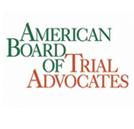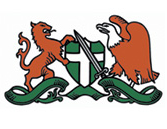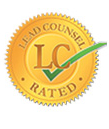Pedestrian and crosswalk laws in California are essential for all road users. These laws specify who has the right-of-way, where you can cross, and the responsibilities of drivers and pedestrians. However, when these laws are ignored and a routine walk results in a serious accident, and you, as a pedestrian, become a victim, then knowing these very laws becomes your first line of defense. Being aware of your rights and the driver's responsibilities can be the solution to seeking justice and rightful compensation for your injuries. Let us look at the laws in detail.
Who is a Pedestrian?
In California, the term pedestrian is more than just walking. The legal definition includes all forms of personal, non-motorized transportation since everybody not covered inside a vehicle is exposed to the road.
Under Vehicle Code Section 467, the term pedestrian is defined as any person on foot or using a personal, non-motorized device propelled by themselves or by gravity while on a highway, other than a bicycle. This means that besides people walking, the law also protects those who use skateboards, roller skates, and non-motorized scooters.
This broad definition is critical to personal injury cases because it guarantees that those using these mobility means are granted the same protection and rights as those simply walking. Moreover, persons with disabilities who use mobility aids, like wheelchairs, are also considered pedestrians under the law.
Pedestrian Right-of-Way in Crosswalks
Vehicle Code Section 21950 is the foundation of laws that give pedestrians a right-of-way in the state, and the driver of a vehicle must yield to a pedestrian in a crosswalk. The fundamental principle is that a driver must yield to a pedestrian crossing the roadway in a marked or unmarked crosswalk at an intersection.
It implies that when a person is in a crosswalk, or even near it with a clear intention to cross, motorists must legally stop and give a person a chance to cross safely.
It is crucial to understand how California law defines a legal crosswalk. The painted white lines on the pavement, easily identified as marked crosswalks, usually feature "PED XING" signs or flashing beacons. However, unmarked crosswalks are also acknowledged by California law. These implied crosswalks are present at almost every intersection, whether or not they are painted. At any intersection, the area where the sidewalk continues across the street is legally considered an unmarked crosswalk, and people in this space have the same right-of-way as people in marked crosswalks. For example, if you walk along a sidewalk and come to a street intersection with no painted lines, you step off the curb to cross, and drivers entering or proceeding through the intersection must yield to you.
The Laws of Crossing Outside a Crosswalk (CVC 21954)
Although pedestrians are typically entitled to have the right-of-way at crosswalks, crossing outside of crosswalks, known as jaywalking, is an offense under Vehicle Code Section 21954. This law states that every pedestrian on a roadway at any point other than within a marked crosswalk or within an unmarked crosswalk at an intersection must yield to vehicles so close that crossing would create a danger. In simple terms, pedestrians crossing mid-block or outside a crosswalk must yield to oncoming cars. However, this does not grant a driver a license to strike a pedestrian even when the latter is crossing against the law.
Drivers have a legal duty to avoid hitting pedestrians, even if the pedestrian is jaywalking. This implies that a driver may be held partly or wholly liable for an accident even when a pedestrian was jaywalking.
This distinction is critical in personal injury cases. Although the fact that a pedestrian chose to cross the road in a place other than a crosswalk is likely to bring about an aspect of comparative fault, it is unlikely to absolve the driver of the accident. The court will investigate whether:
- The driver took reasonable care and attention
- He/she could have had time to respond and avoid the crash
For example, if a driver has time and space to notice a jaywalking pedestrian and safely brake or swerve and fails to do so, the driver’s negligence could play a significant role in deciding who is at fault.
The Pedestrian and the Duty of Care and Comparative Negligence
Although the law places significant responsibility on the drivers to ensure the safety of pedestrians, pedestrians also have a duty of care when it comes to their own safety.
Pedestrians are expected to act as reasonably prudent people would in similar circumstances to avoid an accident. This responsibility encompasses, among others:
- Not suddenly darting into traffic
- Respecting traffic signals and signs
- Using crosswalks where possible
- Avoiding any behavior that would possibly lead to an accident, including walking while distracted, like using a phone or wearing headphones that block out traffic sounds
A pedestrian’s legal duty of care is especially significant because of California's pure comparative negligence doctrine. In contrast to certain states where any degree of fault in a pedestrian may prevent them from receiving any compensation, California allows a pedestrian who is partially to blame in causing an accident to obtain damages. Their compensation will, however, be proportionately reduced according to their assigned degree of fault.
For example, if a pedestrian is involved in an accident and their total damages (medical bills, lost wages, pain and suffering) are calculated to be $100,000, however, they are found to be 20% at fault in the accident (maybe they were on the phone), their recoverable damages would be reduced by 20%. In this case, they would be paid $80,000 ($100,000 - 20%($100,000)).
Even if a pedestrian is found to be 99% at fault, they can still recover 1% of their damages. This system also ensures that all parties' contributions regarding the financial responsibility in case of an accident are considered. This system reinforces the principle that road safety is a shared responsibility.
Critical Rules Beyond Yielding
In addition to the basic requirement of yielding, the California law places several other significant obligations on drivers that can protect pedestrians, given their vulnerability. The duty of care that drivers owe at all times is to drive at a safe speed, taking account of conditions, to keep a proper lookout for pedestrians, and to be ready to respond to unforeseen situations. It implies that drivers should expect that there are pedestrians, although they are not directly visible, and drive accordingly.
Specific Vehicle Code sections further elaborate on these duties:
- Blocking crosswalks (CVC 21970) — This section clearly states that no driver can park his/her car in a marked or unmarked crosswalk or sidewalk. The logic of this is quite apparent: by blocking a crosswalk, a driver makes pedestrians go around the barrier, which usually puts them into the lanes of the moving traffic, where they are more exposed to danger. This is a hazardous condition and directly hinders the safe movement of pedestrians with the right-of-way. A driver violates this law when he/she park at a crosswalk, even temporarily.
- Crossing the sidewalk with a vehicle (CVC 21952) — Vehicle Code Section 21952 provides that the driver of any motor vehicle before driving over or on any sidewalk shall yield the right-of-way to any pedestrian who approaches thereon. This implies that any time a car passes over a sidewalk, either into or out of a driveway, an alley, a parking lot, or a gas station, the driver must always yield to any pedestrian on that sidewalk. In this case, the right-of-way is always given to the pedestrian on the sidewalk. The drivers must stop completely, scan the road, and ensure nobody is on the sidewalk before resuming. It is an absolute right-of-way for pedestrians, and it protects the safety of the pedestrian when cars move through areas typically meant to be used by pedestrians. Failure to yield in this situation could cause serious bodily injury and evident driver liability.
Laws to Protect Blind Pedestrians (CVC 21963)
The California law acknowledges the high vulnerability of blind or partially sighted pedestrians and, therefore, holds the drivers to a high level of care to safeguard them. Vehicle Code Section 21963 is specifically aimed at protecting these people. It states that a totally or partially blind pedestrian, carrying a predominantly white cane, with or without a red tip, or using a guide dog, shall have the right-of-way. Any driver approaching this kind of pedestrian who fails to yield the right-of-way or to take all reasonably necessary precautions to avoid injuring or endangering this pedestrian is guilty of a misdemeanor.
This legal requirement creates an absolute and non-negotiable obligation for drivers. When you meet a pedestrian carrying a white cane or a guide dog, you should stop completely and exercise all reasonable care to avoid endangering that person.
This law is more than just yielding. It involves being alert and having a greater awareness of the movements of the pedestrian and his/her possible restrictions. The law assumes that a person using these aids is deemed to have visual impairments and, therefore, requires heightened protection and needs extra attention. Violation of this law is not only a civil offense but also a criminal misdemeanor, which underscores the seriousness with which the state treats the safety of visually impaired pedestrians by protecting its visually impaired citizens.
What to Do After the Collision: A Step-by-Step Action Plan for Injured Pedestrians
Being struck as a pedestrian is often a disorienting and traumatic experience. Nevertheless, the steps you can take right after the accident may have a crucial influence on your well-being, legal rights, and chances to win your case. Consider taking the following steps:
Find Safety and Emergency Care
Your health is the number one priority. If you can, move yourself to a safe location away from traffic. Call 911 immediately to seek emergency medical help, even if you feel fine or your injuries appear minor. Other severe injuries, like concussions or internal bleeding, do not show symptoms immediately because of adrenaline. Emergency care leads to essential documentation linking your injuries directly to the accident.
File a Police Report and Call 911
Report the accident to law enforcement as early as possible. The police will investigate the scene, gather information, and make an official accident report. This report forms pivotal evidence and may include such information as:
- The data on the driver
- Witness testimonies
- The initial evaluation of the fault by the officer
Always request the police report number.
Document the Scene
If you can, record all details you can remember about the incident. These include:
- Photos or videos — Take snapshots and recordings of your injuries from different angles. This car hit you (license plate, make, model, and any damage), the accident scene (road conditions, traffic lights, skid marks, debris), and any other relevant features in the surroundings.
- Driver information — Obtain the name, contact details, driver's license number, vehicle license plate number, and insurance details (company name and policy number) of the driver. Although police typically collect this information, it is best to gather it yourself to ensure completeness.
- Witnesses — Note down the witnesses and request them to provide their names and contact details. Their neutral reports can be invaluable in finding out what occurred.
- Do not admit fault — Avoid saying anything interpreted as accepting responsibility. Do not apologize and say anything that may be taken as accepting responsibility. The comparative negligence system in California allows that fault is shared and that early admission of guilt may significantly harm your legal claim. Simply state the facts as you observed them, without speculation.
Seek a Complete Medical Assessment, Even for Minor Injuries
A thorough medical assessment should be undertaken at the emergency room or with a specialist, even in minor injuries. Insurance companies may use delays in seeking treatment to claim that your injuries were not the result of the accident or that they are not as serious as you claim.
Do Not Make a Recorded Statement to the Insurer of the Other Driver
The other driver will be insured, and the other driver will likely contact you and ask you to give a recorded statement. Do not do that before consulting an attorney. Insurance adjusters are trained to keep payouts to a minimum, and anything you say in a recorded statement can and will later be used against you to diminish your claim. Forward all communications from the other party's insurer to your attorney.
How an Attorney Establishes Driver Negligence
As a pedestrian, you must be able to demonstrate driver negligence when you are injured to establish your personal injury claim. This is where the experience and resources of an experienced attorney come in handy. An experienced attorney will launch a thorough investigation that involves carefully collecting and reviewing evidence to create a strong case to prove the driver's fault.
Attorneys typically start by obtaining the official police report, which may include critical early observations, witness accounts, and citations issued. Nevertheless, the police reports are not always comprehensive, and an attorney’s investigation goes much further. Your attorney promptly serves preservation or spoliation letters requiring parties not to destroy evidence, including the at-fault driver and their insurance company, advising them not to destroy any possible evidence. This is important to avoid destroying or modifying essential information, including dash cam recordings, vehicle black box data, and internal communications that may reveal the driver's behavior.
Furthermore, your attorney will seek to access traffic, business, or home surveillance footage that could have been recording the accident. He/she can also subpoena the driver's cell phone records to see whether distracted driving, for example, texting or talking on the phone, was a factor.
He/she could also hire accident reconstruction specialists in complex cases. These experts examine:
- Physical evidence on the scene, including skid marks, vehicle damage, and debris patterns
- Witness testimony and other information to scientifically reconstruct the accident
- Vehicle speeds
- Point of impact
- The order of events
Recovering Damages After a Pedestrian Accident
One of the most common questions after a serious pedestrian accident is, “What is my claim worth?”
The settlement of your pedestrian accident claim does not depend on a mere average but on a thorough evaluation of your sustained damages. These injuries are divided into two main categories: non-economic and economic.
Economic Damages
Economic or special damages are the monetary losses you suffer as a direct consequence of your injuries. These are real and often proven by bills, receipts, and wage statements. They include:
- Medical bills — These include present and future expenses of emergency room, hospitalization, doctor visits, surgery, physical therapy, rehabilitation, prescription drugs, medical equipment, and in-home care.
- Lost wages — These are lost incomes due to time off work during recovery.
- Loss of earning capacity — Damages recovered in the event of a long-term or permanent loss of your ability to earn an income due to your injuries.
Non-Economic Damages
Non-economic or general damages are less objective and compensate you for the intangible losses with no invoice attached. Although harder to quantify, they often make up many pedestrian accident settlements due to the severity of injuries involved. These include:
- Pain and suffering — Compensation for the physical pain, discomfort, and agony you undergo as a result of your injuries in the present and future, as projected.
- Emotional distress or mental anguish — This includes the psychological effects of the accident, including anxiety, depression, PTSD, fear, shock, and insomnia.
- Scarring and disfigurement — You can be compensated for any permanent visible marks or alterations in physical appearance.
- Loss of enjoyment of life — Compensation for the inability to enjoy hobbies, recreational activities, or previous daily routines you enjoyed before the accident.
The final value of your claim depends on several factors, including the extent and the permanence of your injuries, the evidentness of the fault (how easy it is to prove negligence), and the availability of insurance policy limits. There is no one-size-fits-all "average" settlement since every case is different and is based on the losses of the particular person and how the accident has affected their lives.
Find a Pedestrian Accident Expert Near Me
California's laws regarding pedestrians and crosswalks are aimed at protecting all people, yet accidents occur, and their impact on pedestrians can be severe. You should know your rights, whether using a marked crosswalk or benefiting from special protections as a visually impaired pedestrian. However, navigating the legal process after a pedestrian accident can be overwhelming, especially while recovering from injuries.
If you have been injured, contact the Los Angeles Car Accident Attorney today at 424-237-3600 for a free consultation. Let us help you pursue the justice and compensation you deserve. We will fight on your behalf to secure the compensation you are entitled to.






